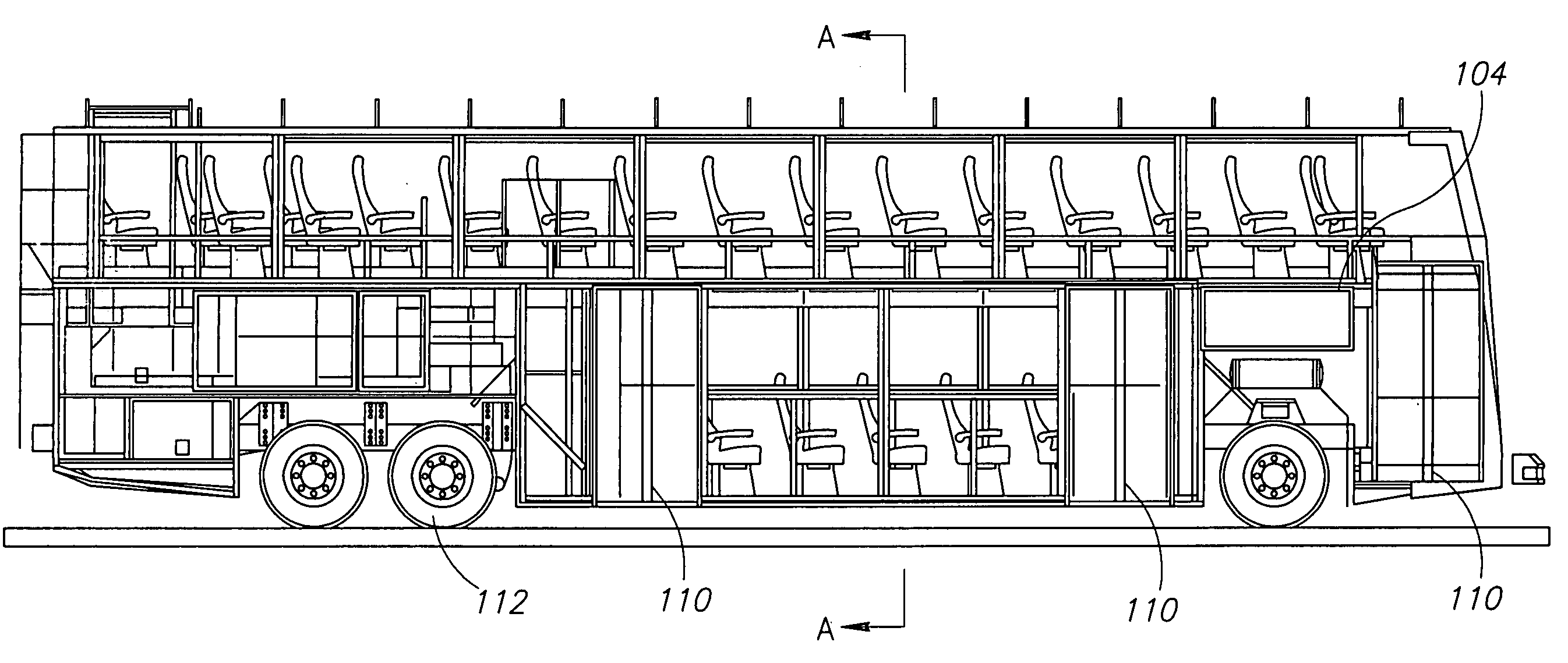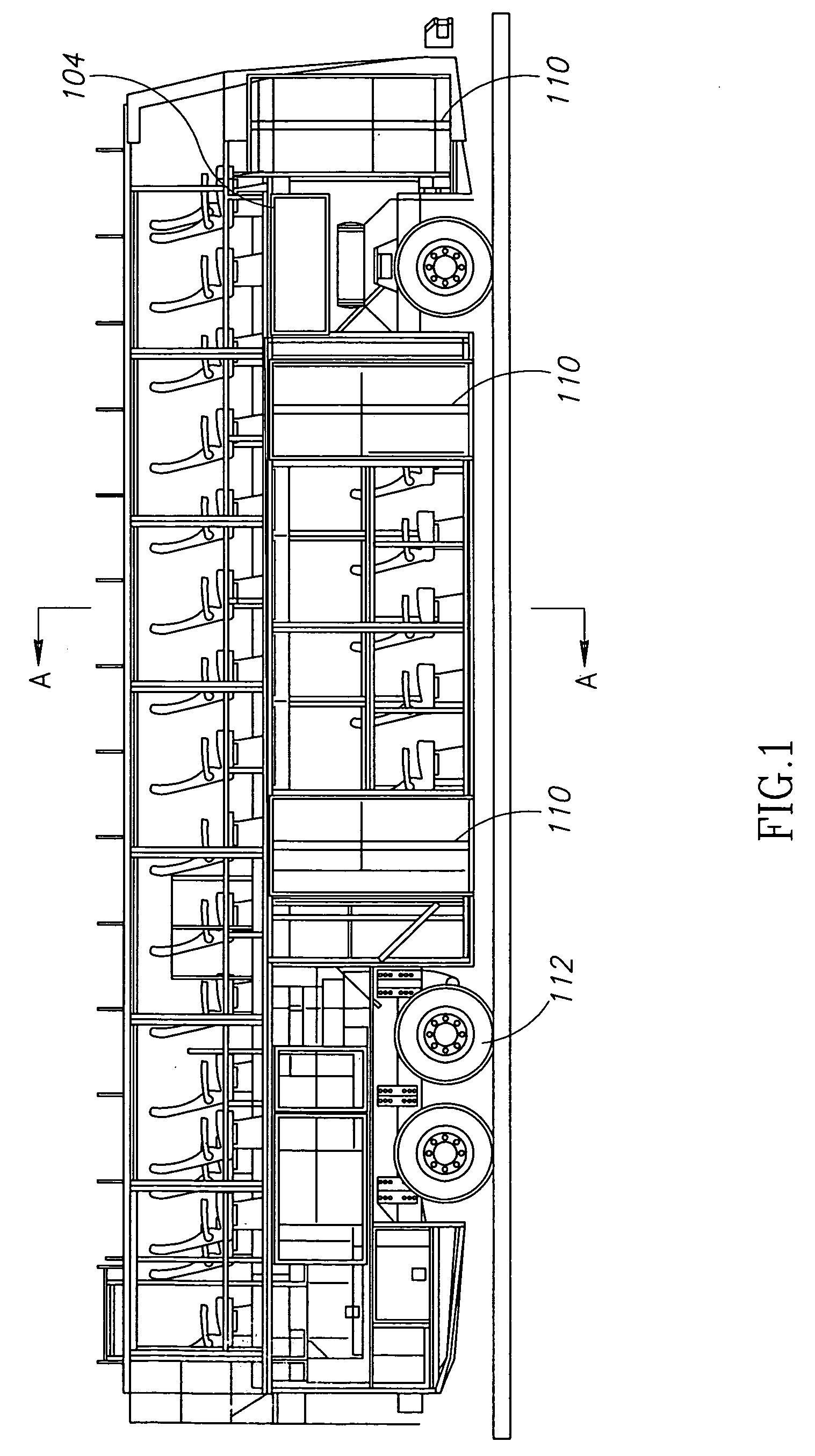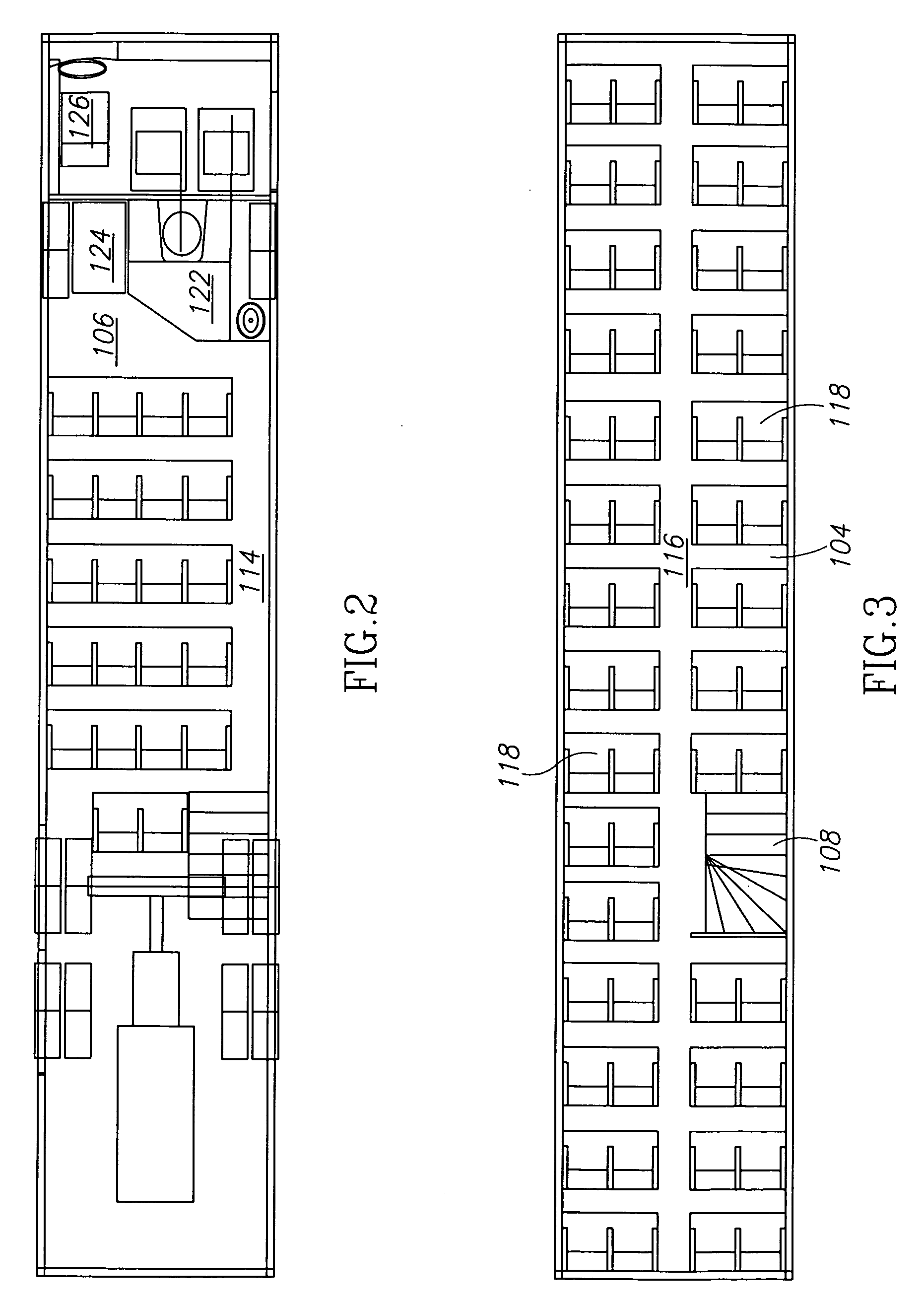Low profile doble deck bus
a low-profile, double-decker technology, applied in the direction of roofs, transportation and packaging, vehicle arrangements, etc., can solve the problems of common height limitations of tunnels and bridges, no known double-decker passenger buses suitable for carrying a large number of passengers in densely populated large cities, and the use of such double-deck buses. achieve the effect of sufficient loading and unloading of the vehicle and maximum seating
- Summary
- Abstract
- Description
- Claims
- Application Information
AI Technical Summary
Benefits of technology
Problems solved by technology
Method used
Image
Examples
Embodiment Construction
[0015]Referring now generally to the drawings, the preferred embodiment of the inventive bus is disclosed. As best seen in FIG. 1, a double deck bus is provided having an upper seating platform 104 and a lower seating platform 106. The maximum height of the bus from the ground is twelve foot six inches (150 inches) which allows the bus to navigate most height restricted tunnels and bridges in the United States. The bus is configured to provide the maximum number of comfortable seating platforms for the passengers. As seen in FIGS. 2 and 3, a total of eighty seats can be presented in the inventive bus without exceeding the maximum height, width and length dimensions. Some of the seats on the lower level can be folded or removed to provide additional space and additional wheel chair accommodations.
[0016]As shown in FIGS. 1 and 2, it is preferred that the stairwell 108 to the upper deck is positioned on the same side of the bus as the doors 110. One stairwell 108 is positioned adjacent...
PUM
 Login to View More
Login to View More Abstract
Description
Claims
Application Information
 Login to View More
Login to View More - R&D
- Intellectual Property
- Life Sciences
- Materials
- Tech Scout
- Unparalleled Data Quality
- Higher Quality Content
- 60% Fewer Hallucinations
Browse by: Latest US Patents, China's latest patents, Technical Efficacy Thesaurus, Application Domain, Technology Topic, Popular Technical Reports.
© 2025 PatSnap. All rights reserved.Legal|Privacy policy|Modern Slavery Act Transparency Statement|Sitemap|About US| Contact US: help@patsnap.com



